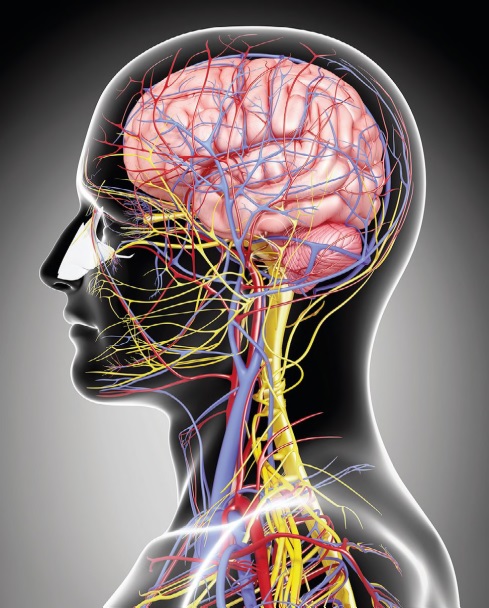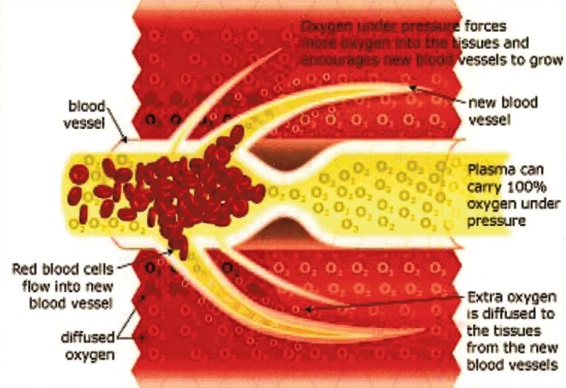

FLESH AND BLOOD: Blood flow in the brain (Fig. 7); An adequate supply of oxygen and nutrients is critical for all human cells and tissues; Neovascularization is the formation of functional microvascular networks with red blood cell profusion. Angiogenesis is mainly characterized by the protrusion and outgrowth of capillary buds and sprouts from pre-existing blood vessels (Fig. 8).
HOW NEW BLOOD CELLS AND PATHWAYS ARE CREATED
An adequate supply of oxygen and nutrients is critical for all human cells and tissues. Nurturing the proliferation of the below processes with pressurized oxygen has accelerated the healing of traumatized areas in the brain.
Angiogenesis: The development of new blood vessels from preexisting vessels. It occurs in the healthy body to heal wounds and restore blood flow in damaged tissues after injuries.
Neovascularization: The formation of functional microvascular networks (blood paths) in red blood cell perfusion. It differs from angiogenesis, characterized by profusion and outgrowth of capillary buds and sprouts from preexisting blood vessels. Hyperbaric oxygen stimulates both.
THE INJURED VETERAN'S OPTIMAL COURSE OF TREATMENT
Each veteran treated at the Rocky Mountain Hyperbaric Institute receives a concentrated oxygen brain bath for forty hours, one hour at a time. The following schematic shows what happens inside the damaged brain when oxygen is introduced at 1.5 atmospheres (the equivalent of 17 feet below sea level at a 5,000-foot altitude). The oxygen healing process includes both angiogenesis and neovascularization, as defined above. In addition, the damaged dendrites and neuro pathways are either bypassed if the cell or dendrite is dead or can be revitalized if in a dormant state (see Figure 8).
While there may be few exceptions, virtually every combat veteran who suffers from TBI has PTSD. The American Journal of Psychiatry and the Mayo Clinic have a similar definition: "post-traumatic stress disorder (PTSD) is an anxiety
disorder that may develop after exposure to a terrifying event or ordeal in which severe physical harm occurred or was threatened. Traumatic events that trigger PTSD include violent assaults, natural or unnatural disasters, accidents or military combat."
They further define the signs and symptoms of PTSD and group them as follows:
- Re-experiencing symptoms:
- Flashbacks – reliving the trauma repeatedly, including the experience of physical symptoms like a racing heart or sweating. Words, objects, or situations can trigger these symptoms.
- Bad dreams and frightening thoughts that may cause problems in everyday life.
- Avoidance symptoms:
- Staying away from places, events, or objects that trigger experience reminders.
- Feeling emotionally numb, with strong guilt, depression, or worry predominant.
- Little interest in enjoyable activities in the past – before the trauma.
- Having trouble remembering or recalling the dangerous or terrifying event.
- Hyperarousal symptoms:
- Easily startled, to the extent that a person may change their routine.
- Feeling tense or "on edge," leading to more stress and angry outbursts.
- Inability to function normally to do basic daily tasks, usually with little sleep.